Mikael Gidlund
Efficient Multi-Source Localization in Near-Field Using only Angular Domain MUSIC
Jan 20, 2025



Abstract:The localization of multiple signal sources using sensor arrays has been a long-standing research challenge. While numerous solutions have been developed, signal space methods like MUSIC and ESPRIT have gained widespread popularity. As sensor arrays grow in size, sources are frequently located in the near-field region. The standard MUSIC algorithm can be adapted to locate these sources by performing a 3D search over both the distance and the angles of arrival (AOA), including azimuth and elevation, though this comes with significant computational complexity. To address this, a modified version of MUSIC has been developed to decouple the AoA and distance, enabling sequential estimation of these parameters and reducing computational demands. However, this approach suffers from reduced accuracy. To maintain the accuracy of MUSIC while minimizing complexity, this paper proposes a novel method that exploits angular variation across the array aperture, eliminating the need for a grid search over distance. The proposed method divides the large aperture into smaller sections, with each focusing on estimating the angles of arrival. These angles are then triangulated to localize the sources in the near-field of the large aperture. Numerical simulations show that this approach not only surpasses the Modified MUSIC algorithm in terms of mean absolute error but also achieves accuracy comparable to standard MUSIC, all while greatly reducing computational complexity-370 times in our simulation scenario.
Balancing AoI and Rate for Mission-Critical and eMBB Coexistence with Puncturing, NOMA,and RSMA in Cellular Uplink
Aug 23, 2024



Abstract:Through the lens of average and peak age-of-information (AoI), this paper takes a fresh look into the uplink medium access solutions for mission-critical (MC) communication coexisting with enhanced mobile broadband (eMBB) service. Considering the stochastic packet arrivals from an MC user, we study three access schemes: orthogonal multiple access (OMA) with eMBB preemption (puncturing), non-orthogonal multiple access (NOMA), and rate-splitting multiple access (RSMA), the latter two both with concurrent eMBB transmissions. Puncturing is found to reduce both average AoI and peak AoI (PAoI) violation probability but at the expense of decreased eMBB user rates and increased signaling complexity. Conversely, NOMA and RSMA offer higher eMBB rates but may lead to MC packet loss and AoI degradation. The paper systematically investigates the conditions under which NOMA or RSMA can closely match the average AoI and PAoI violation performance of puncturing while maintaining data rate gains. Closed-form expressions for average AoI and PAoI violation probability are derived, and conditions on the eMBB and MC channel gain difference with respect to the base station are analyzed. Additionally, optimal power and rate splitting factors in RSMA are determined through an exhaustive search to minimize MC outage probability. Notably, our results indicate that with a small loss in the average AoI and PAoI violation probability the eMBB rate in NOMA and RSMA can be approximately five times higher than that achieved through puncturing.
A Deep Reinforcement Learning Approach for Improving Age of Information in Mission-Critical IoT
Nov 23, 2023Abstract:The emerging mission-critical Internet of Things (IoT) play a vital role in remote healthcare, haptic interaction, and industrial automation, where timely delivery of status updates is crucial. The Age of Information (AoI) is an effective metric to capture and evaluate information freshness at the destination. A system design based solely on the optimization of the average AoI might not be adequate to capture the requirements of mission-critical applications, since averaging eliminates the effects of extreme events. In this paper, we introduce a Deep Reinforcement Learning (DRL)-based algorithm to improve AoI in mission-critical IoT applications. The objective is to minimize an AoI-based metric consisting of the weighted sum of the average AoI and the probability of exceeding an AoI threshold. We utilize the actor-critic method to train the algorithm to achieve optimized scheduling policy to solve the formulated problem. The performance of our proposed method is evaluated in a simulated setup and the results show a significant improvement in terms of the average AoI and the AoI violation probability compared to the related-work.
Industry 5.0 is Coming: A Survey on Intelligent NextG Wireless Networks as Technological Enablers
May 18, 2022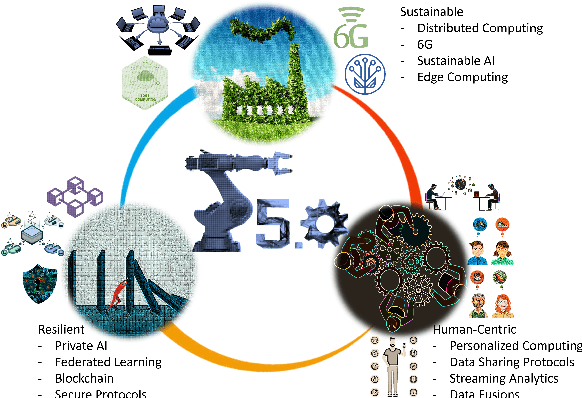
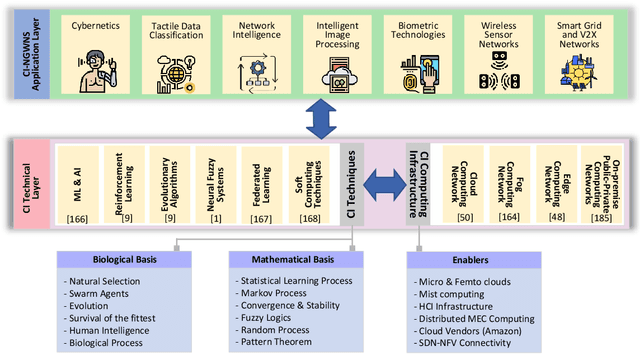
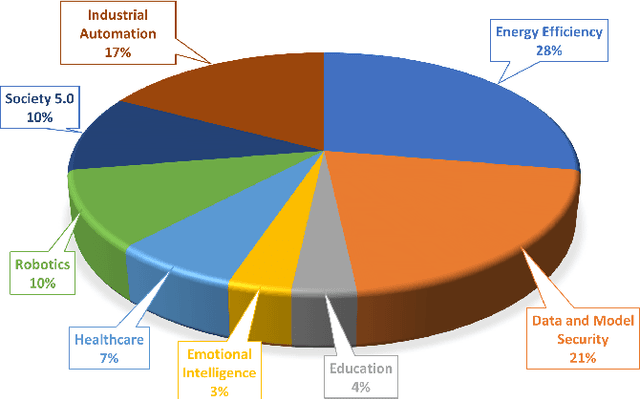
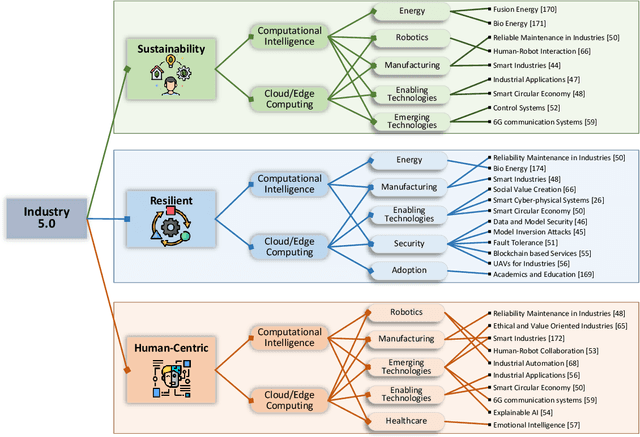
Abstract:Industry 5.0 vision, a step toward the next industrial revolution and enhancement to Industry 4.0, envisioned the new goals of resilient, sustainable, and human-centric approaches in diverse emerging applications, e.g., factories-of-the-future, digital society. The vision seeks to leverage human intelligence and creativity in nexus with intelligent, efficient, and reliable cognitive collaborating robots (cobots) to achieve zero waste, zerodefect, and mass customization-based manufacturing solutions. However, the vision requires the merging of cyber-physical worlds through utilizing Industry 5.0 technological enablers, e.g., cognitive cobots, person-centric artificial intelligence (AI), cyberphysical systems, digital twins, hyperconverged data storage and computing, communication infrastructure, and others. In this regard, the convergence of the emerging computational intelligence (CI) paradigm and next-generation wireless networks (NGWNs) can fulfill the stringent communication and computation requirements of the technological enablers in the Industry 5.0 vision, which is the aim of this survey-based tutorial. In this article, we address this issue by reviewing and analyzing current emerging concepts and technologies, e.g., CI tools and frameworks, network-in-box architecture, open radio access networks, softwarized service architectures, potential enabling services, and others, essential for designing the objectives of CINGWNs to fulfill the Industry 5.0 vision requirements. Finally, we provide a list of lessons learned from our detailed review, research challenges, and open issues that should be addressed in CI-NGWNs to realize Industry 5.0.
Edge Intelligence in Softwarized 6G: Deep Learning-enabled Network Traffic Predictions
Jul 31, 2021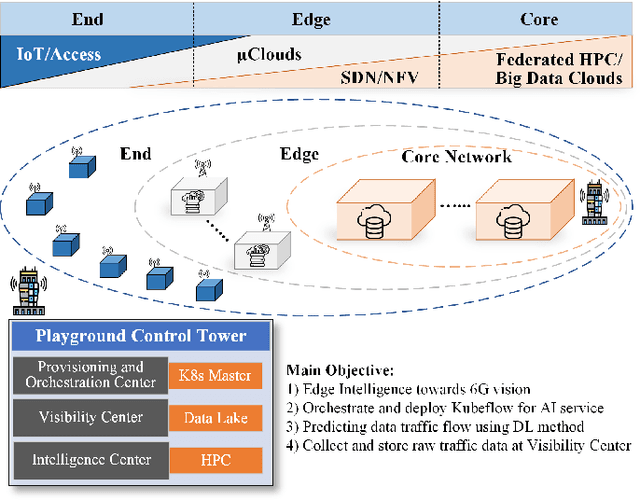
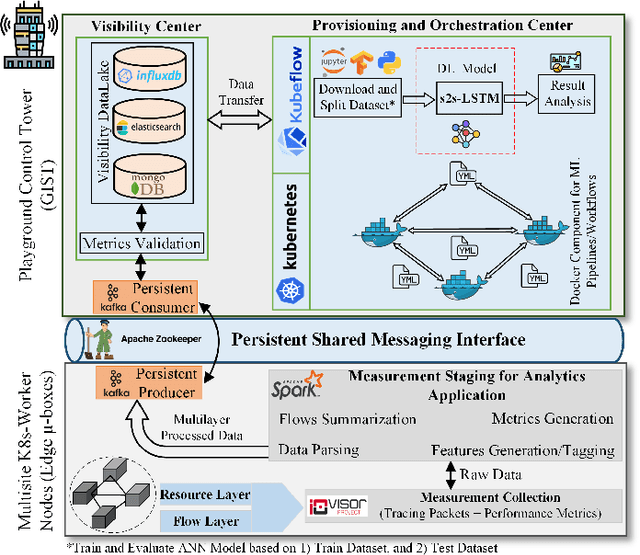
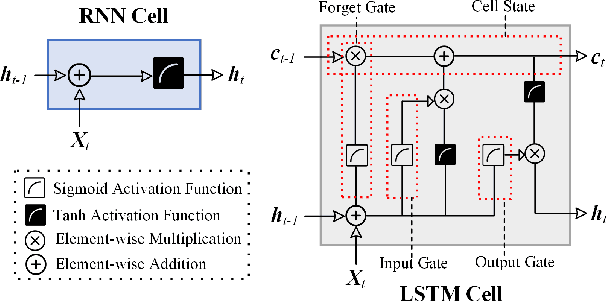
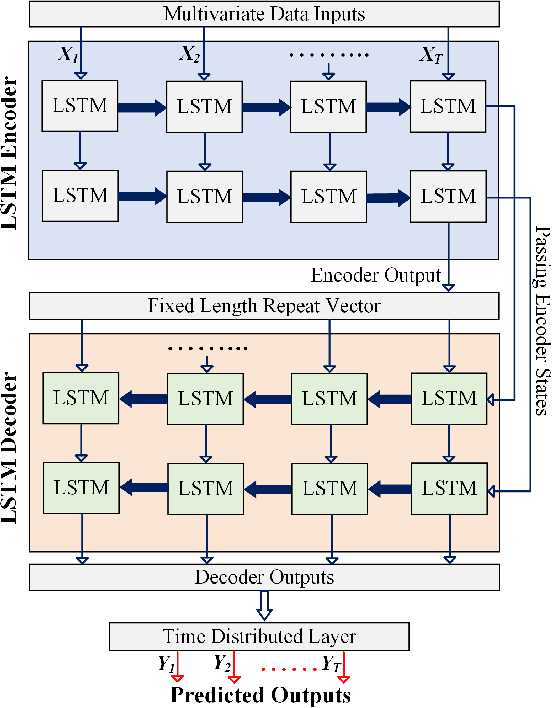
Abstract:The 6G vision is envisaged to enable agile network expansion and rapid deployment of new on-demand microservices (i.e., visibility services for data traffic management, mobile edge computing services) closer to the network's edge IoT devices. However, providing one of the critical features of network visibility services, i.e., data flow prediction in the network, is challenging at the edge devices within a dynamic cloud-native environment as the traffic flow characteristics are random and sporadic. To provide the AI-native services for the 6G vision, we propose a novel edge-native framework to provide an intelligent prognosis technique for data traffic management in this paper. The prognosis model uses long short-term memory (LSTM)-based encoder-decoder deep learning, which we train on real time-series multivariate data records collected from the edge $\mu$-boxes of a selected testbed network. Our result accurately predicts the statistical characteristics of data traffic and verify against the ground truth observations. Moreover, we validate our novel framework model with two performance metrics for each feature of the multivariate data.
Reconfigurable Intelligent Surfaces: Potentials, Applications, and Challenges for 6G Wireless Networks
Jul 12, 2021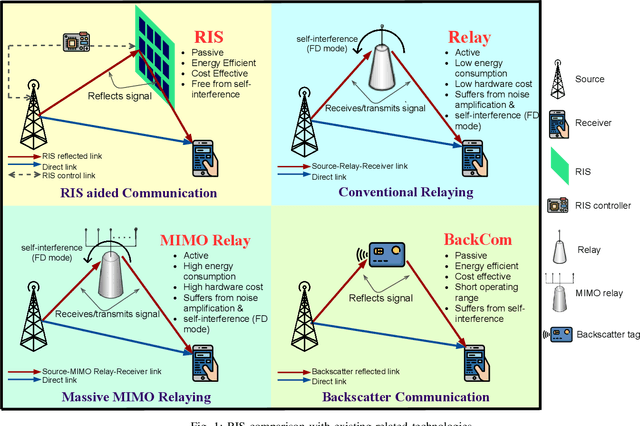
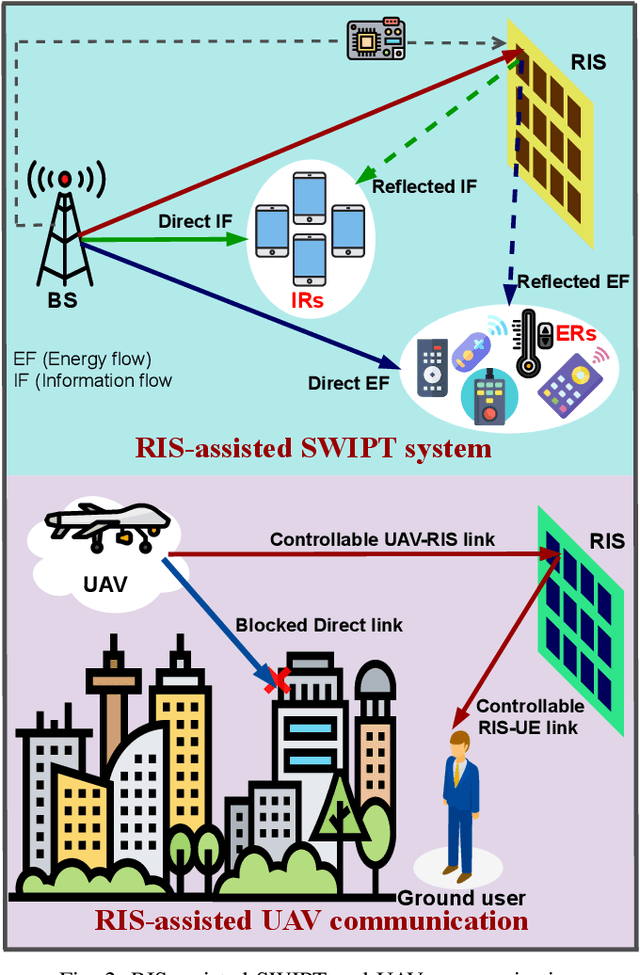
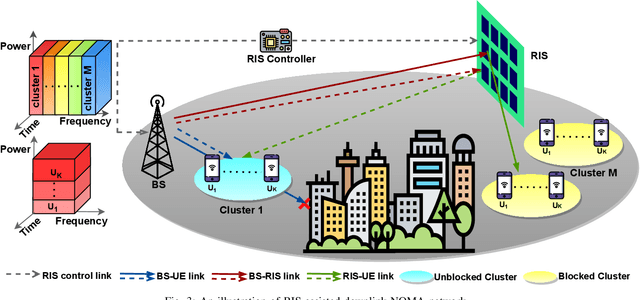
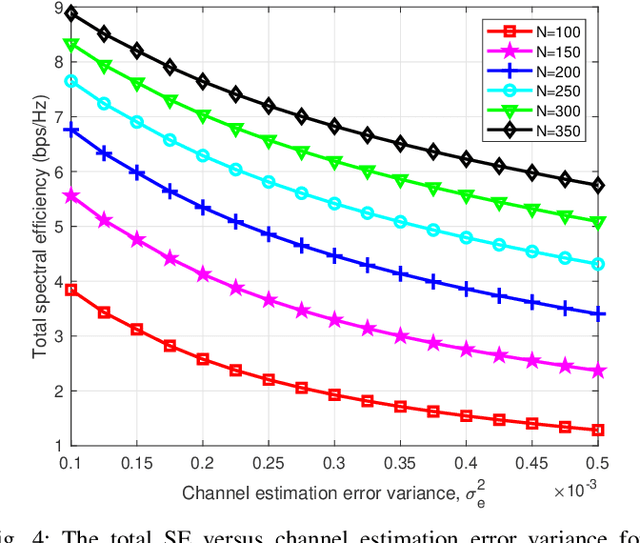
Abstract:Reconfigurable intelligent surfaces (RISs), with the potential to realize a smart radio environment, have emerged as an energy-efficient and a cost-effective technology to support the services and demands foreseen for coming decades. By leveraging a large number of low-cost passive reflecting elements, RISs introduce a phase-shift in the impinging signal to create a favorable propagation channel between the transmitter and the receiver.~\textcolor{black}{In this article, we provide a tutorial overview of RISs for sixth-generation (6G) wireless networks. Specifically, we present a comprehensive discussion on performance gains that can be achieved by integrating RISs with emerging communication technologies. We address the practical implementation of RIS-assisted networks and expose the crucial challenges, including the RIS reconfiguration, deployment and size optimization, and channel estimation. Furthermore, we explore the integration of RIS and non-orthogonal multiple access (NOMA) under imperfect channel state information (CSI). Our numerical results illustrate the importance of better channel estimation in RIS-assisted networks and indicate the various factors that impact the size of RIS. Finally, we present promising future research directions for realizing RIS-assisted networks in 6G communication.
 Add to Chrome
Add to Chrome Add to Firefox
Add to Firefox Add to Edge
Add to Edge